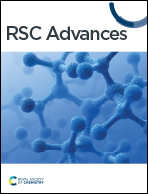Lignocellulosic residues from bioethanol production: a novel source of biopolymers for laccase immobilization
Abstract
The full utilization of the main components in the lignocellulosic biomass is the major goal from a biorefinery point of view, giving not only environmental benefits but also making the process economically viable. In this sense the solid residue obtained in bioethanol production after steam explosion pretreatment, enzymatic hydrolysis, and fermentation of the lignocellulosic biomass, was studied for further valorization. Two different residues were analyzed, one generated by the production of cellulosic ethanol from an energy crop such as switchgrass (Panicum virgatum) and the other, from wood (Eucalyptus globulus). The chemical composition of these by-products showed that they were mainly composed of lignin with a total content range from 70 to 83% (w/w) and small amounts of cellulose and hemicellulose. The present work was focused on devising a new alternative for processing these materials, based on the ability of the ionic liquids (IL) to dissolve lignocellulosic biomass. The resulting mixture of biopolymers and IL constituted the raw material for developing new insoluble biocatalysts. Active hydrogels based on fungal laccase from Dichostereum sordulentum 1488 were attained. A multifactorial analysis of the main variables involved in the immobilization process enabled a more direct approach to improving hydrogel-bound activity. These hydrogels achieved a 97% reduction in the concentration of the estrogen ethinylestradiol, an emerging contaminant of particular concern due to its endocrine activity. The novel biocatalysts based on fungal laccase entrapped on a matrix made from a by-product of second-generation bioethanol production presents great potential for performing heterogeneous catalysis offering extra value to the ethanol biorefinery.

- This article is part of the themed collections: A celebration of Latin American research in RSC Advances and Chemistry in Biorefineries


 Please wait while we load your content...
Please wait while we load your content...